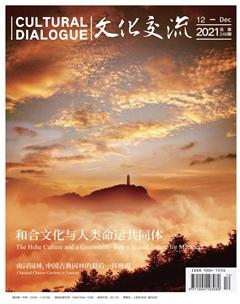南浔园林,中国古典园林的最后一抹晚霞
陆士虎


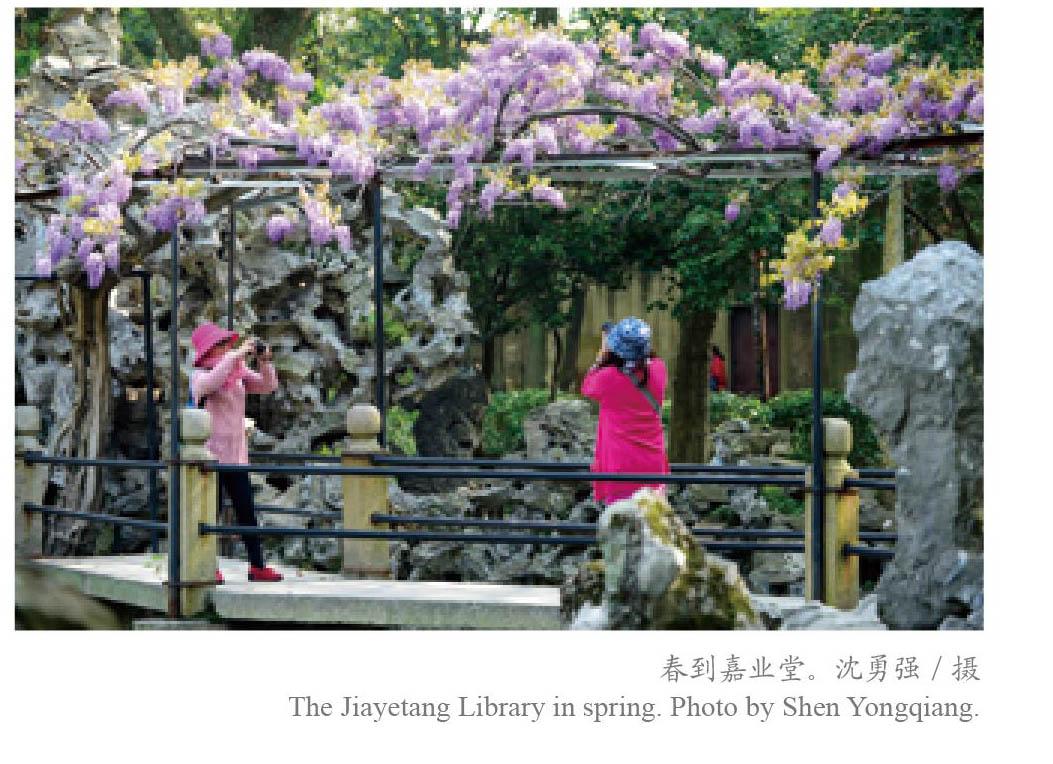
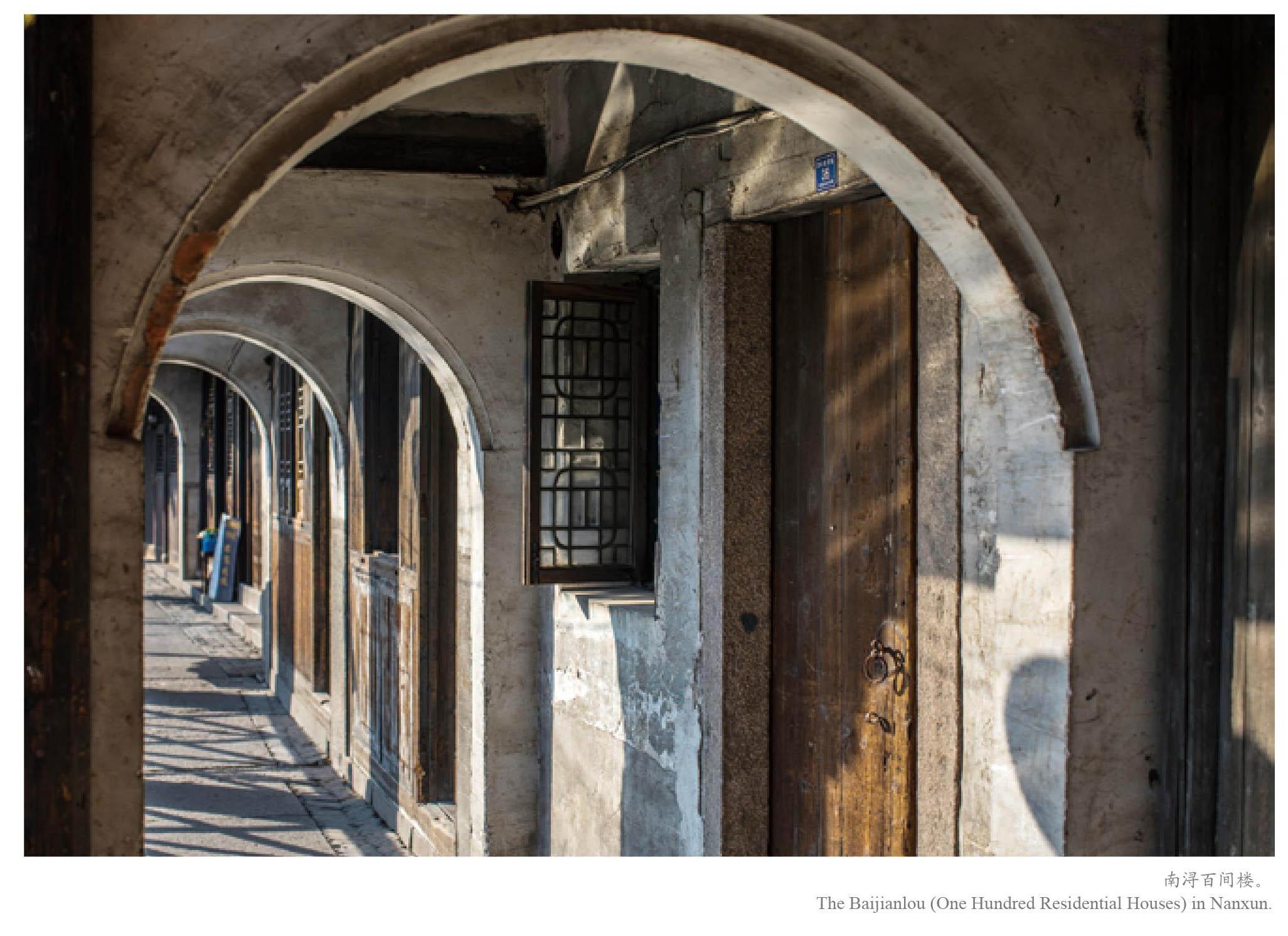



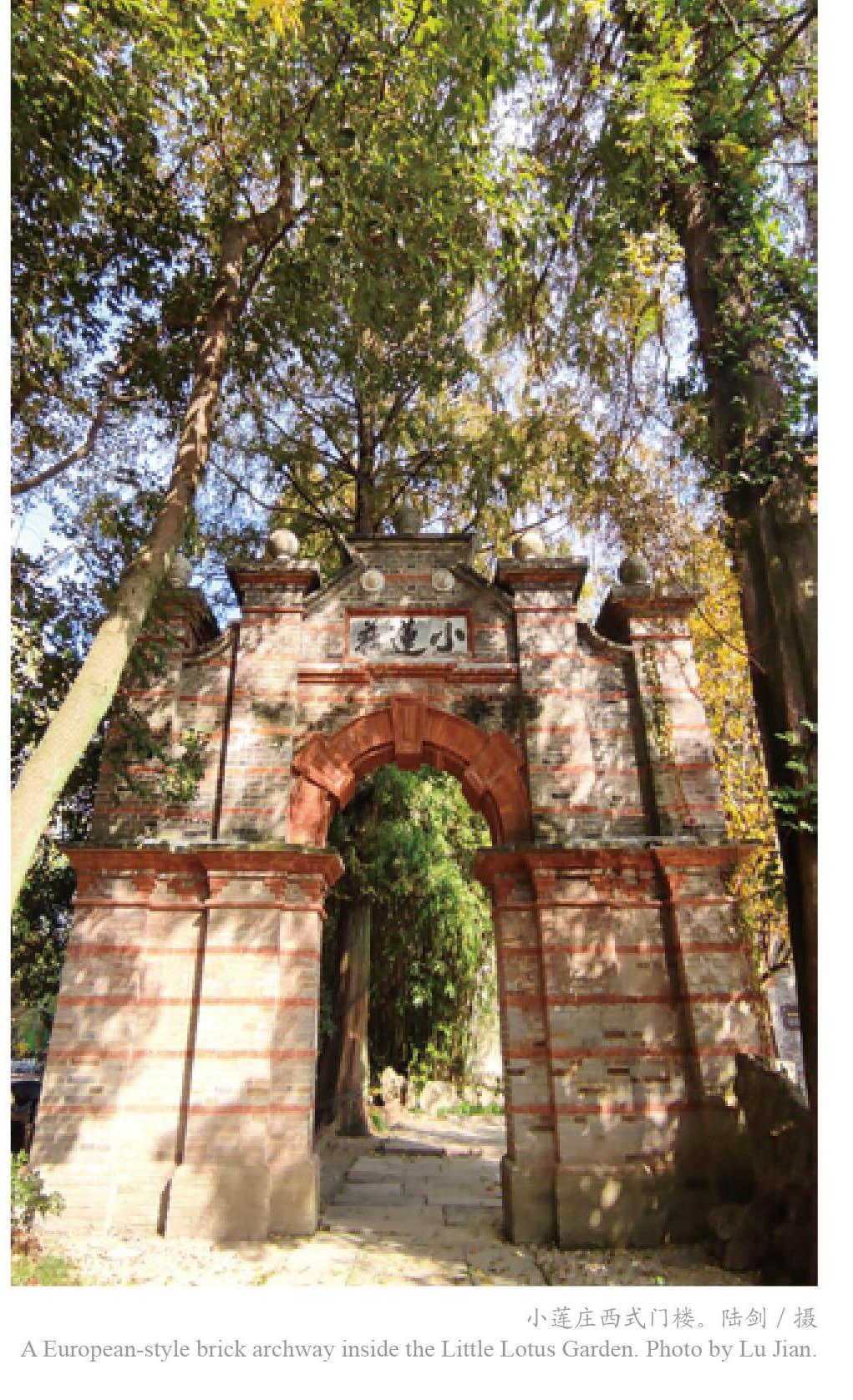
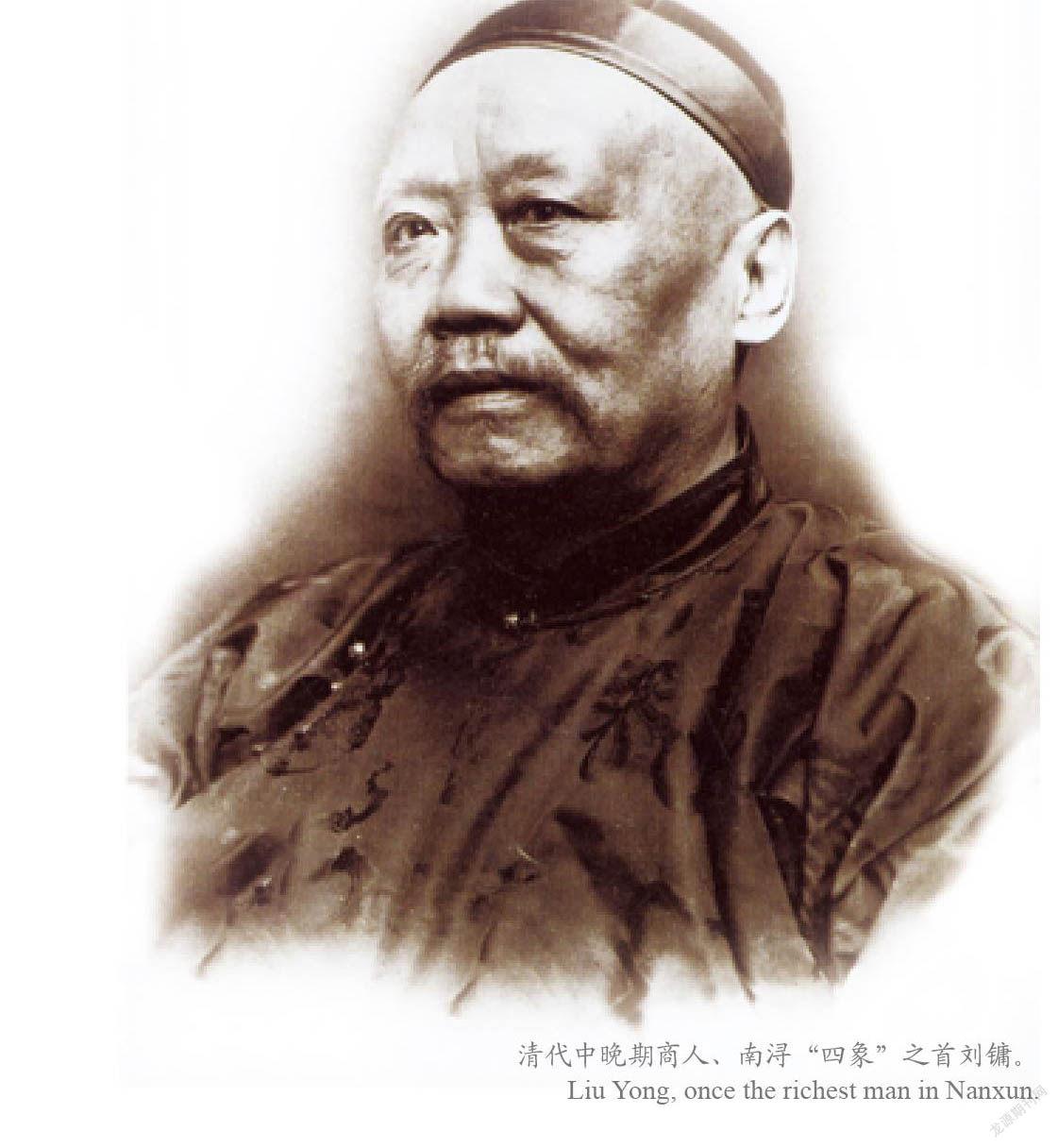
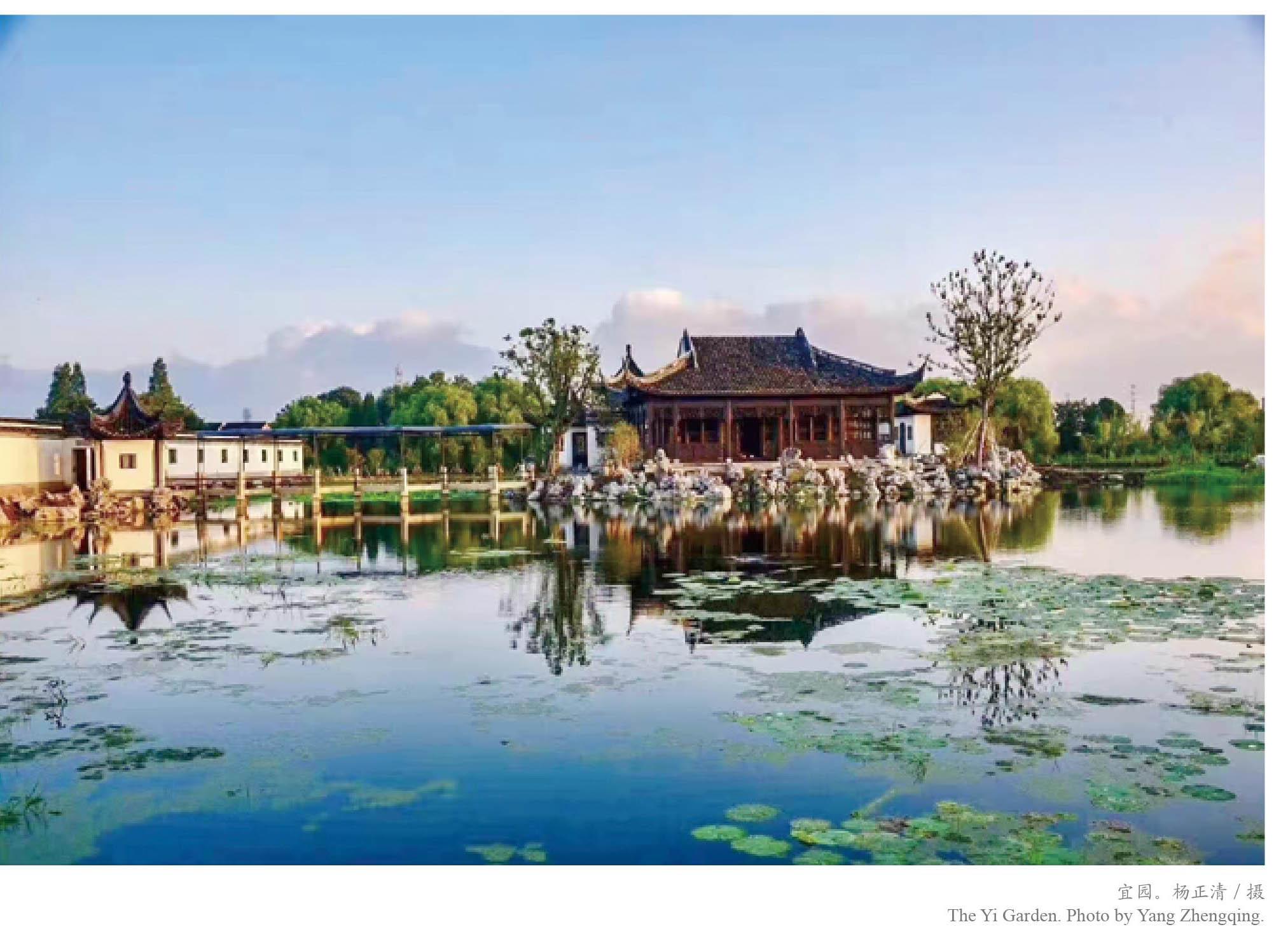


江南古镇南浔近代园林——
宜园、适园、小莲庄、留园、东园皆为巨构,
尤其是小莲庄系南浔“四象”之首
刘镛祖孙三代经四十年精心营造而成,
为江南近代园林的一道奇葩……
江南古镇南浔是近代园林荟萃之地。自南宋以来,曾拥有各式园林26座之多,是一支重要的地域流派。特别是近代史上,由于闻名海内外的辑里湖丝造就了当地一代儒商望族,不仅在构造上讲求叠山理水和植物的自然精神,追求建筑美与自然美的融合以及诗情画意的表达,而且因袭传统文人园林的手法和意境,收藏、雅集与园林相得益彰,寓观景与藏书著书、吟咏唱和于一体,还汲取西方文化元素,富有华洋杂糅之意匠,形成了不少独特的中西合璧建筑。正如近代著名园林专家童寯在《江南园林志》中所云:“南宋以来,园林之盛,首推四州,即湖、杭、苏、扬也。而以湖州、杭州为尤。”“然湖州园林,实萃于南浔,以一镇之地,而拥有五园,且皆为巨构,实江南所仅见。”
清华大学教授朱钓珍主编的《南浔近代园林》一书说,江南园林可分为城镇第宅地园林和乡村地园林。城镇第宅地园林,也可称为宅园,大多与第宅连在一起,位于市镇内部,依附于第宅并在其旁侧或后端构园筑池,俗称“后花园”;而乡村地园林面积较大,也可称为郊园,因为宅园规模往往较小。后来私园选址逐渐转向相对开敞的郊外地带,所建造的园林面积逐渐增大,景象结构多疏朗风格,且富有田园情调,靠叠山、楼阁取得高视点借景,以借田野风光;也不设围墙而用小河相隔,似隔非隔,借景借情。其中南浔近代五园——宜园、适园、小莲庄、留园(觉园)、绿绕山庄(东园)就均属于乡村地山水园林。这些园林不但在面积上称为“巨构”,而且融兼容性、完美性、艺术性和随意性于一体,造园立意上富有创新,形式上疏朗大气,意境上深邃而富有哲理。随着近代社会和文化转型,其布局设计和功能亦随之呈现嬗变的态势。
小莲庄:
江南鄉村山水园林的经典
江南名园小莲庄是南浔至今唯一保存完好的“五巨构”之一,始建于清光绪十一年(1885),占地27亩,因慕元末湖州籍书画大家赵孟頫所建莲花庄之名,故称小莲庄。它系南浔“四象”之首富刘镛祖孙三代经40年精心营造,其结构与格调是江南近代园林异化的一个典范。这里原是“长生寺”旧址,创于北宋,隔河有“挂瓢居”书院。前临荷池,名“挂瓢池”,俗名“鱼池泾”。千百年来,这块风水宝地一直飘逸着“浔溪悠悠,书香不绝”的遗韵。石库门外有一条名叫“鹧鸪溪”的小河,碧水清清,悠悠长流,溪畔河埠边有两棵大榆树,常年郁郁葱葱。
小莲庄建筑群体由园林、家庙、义庄等组成。其中园林分内园、外园两部分。外园的主体是一个十亩的荷花池,即古之挂瓢池。西侧碑刻长廊,乃是文物与艺术兼备之珍品。若驻足静观,细读慢品,心灵顿有“诗与远方”的漫游之感。这些碑刻共45方,皆历代名家翰墨,真草隶篆,各体皆备,书艺高超,文采风流,刻工精细,分别为《梅花仙馆藏真》和《紫藤花馆藏帖》。《梅花仙馆藏真》碑刻14方(其中题跋4方),由南浔丝商周昌富于清同治十一年(1872)秋所刻,置于怡园中;清光绪二十年(1894)归属刘锦藻。这些碑刻是清代考据家、古文字学家严可均按《史记》所纂“琅琊台刻石拓本”铁线篆书全文(454字),字迹大小悉依真迹。《紫藤花馆藏帖》原主是江苏省吴江黎里镇人、翰林院待诏徐达源(字岷江,号山民),为袁枚弟子,夫人吴琼仙亦好写诗。这些碑刻系徐氏与袁枚、阮元等20余位文人学士往来的诗文、信函,其中有日本诗人熊阪秀沐等人的手迹。非常巧合的是,有一方为电视剧《宰相刘罗锅》中的历史原型刘墉所书,题为《颜平原送刘太守序》。刘墉真迹藏于刘镛花园,真迹上款还盖有清乾隆皇帝“御赐仙舫”印章,乃中华南北文化史上之佳话。
碑刻长廊旁有一四面厅,雅称“净香诗窟”,是主人邀请文人墨客吟诗酬唱之处,为国内建筑史上罕见的艺术精品。园林专家童寯教授曾称,“此例最佳者,当推南浔小莲庄中的净香诗窟”。陈从周教授则赞誉:“顶格(天花)之妙,为海内孤本。”凭栏远眺,荷池美景尽收眼底。若是夏季,最宜消暑。晴有荷香,雨有莲趣,风摇菡萏,婀娜多姿,好像沉浸在一个梦里,依稀可见昔日的繁茂。那沿池的太湖石瘦漏透皱的斑驳身影,见证过多少的繁华和凋零;那太湖石上点点滴滴的苍苔,是心情笔记,更是史书卷帙,只待有心人去揣摩,去品读,去回忆。
荷池润养着玲珑剔透的太湖石假山与东升阁、养心德斋、退休小榭等姿态各异的楼阁建筑,映衬的时空背景是柳堤石桥,还有迤逦铺展的双面透空的曲廊,点缀其间的水榭、钓台、圆亭、桥亭、扇亭、铁皮亭,以及北岸的六角亭、砖牌坊、小假山,共同构建了一幅疏密有致的园林图景。任何一处建筑,都可以望见荷池景色,春暖花开,夏听蛙鸣,秋不见落叶,冬不思料峭。其中还有几枝百年古树。石桥旁那紫藤古枝新芽,绿荫遮日。据说当年刘镛看中这块风水宝地,是因为它蕴含着“紫气东来”的内涵,借此企盼今后刘家大富大贵。
跨进内园,一座偌大的太湖石假山扑面耸立,仿唐代诗人杜牧《山行》的“远上寒山石径斜,白云生处有人家,停车坐爱枫林晚,霜叶红于二月花”的诗意构筑。沿山上三重崎岖的小路,越攀登越幽静。悬崖间有一石桥飞架,并有洞穴穿过。东坡栽松,西坡植枫,既不阻挡视线,又可绿荫遮地。若是秋风乍起,青松苍翠,秋风红醉,点缀出满园秋色,像绚烂后淡泊的宋词,当是绝佳景色。登上峰顶,俯视山下流水清涟、翠山倒影,飘逸出一种古筝独奏般的淡雅清丽,宛如一帧意境悠远的山水画批。
刘氏家庙门前耸立着两座“御赐牌坊”,东为积善牌坊,西为贞节牌坊。两座牌坊都是五楼四柱,集浮雕、镂雕、透雕、圆雕于一体,剔透而不轻浮,庄重而不失典雅,其中人物、花卉图案,无不栩栩如生,乃至小小的点缀均有出处。刘氏家庙蕴含着丰厚的宗祠文化内涵,清逊位皇帝溥仪御赐的九龙金匾高挂在祭厅,李鸿章、左宗棠、盛宣怀、陆润庠、吴昌硕、徐世昌、张謇、郑孝胥等名流题赠的对联、楹联,更把当年刘家的面子捧得足足的。据当地文化老人说,刘氏家庙作为小莲庄群体建筑最为重要的组成部分,其形制、工艺充分体现了刘家的地位、财力与传统宗族观念,让人品味到望族世家文人雅士的境界和涵养。当代著名散文家黄裳生前将其与《红楼梦》里的贾氏祠堂相提并论,江南罕见。
而位于家庙西侧的刘氏义庄,过去是刘氏家族的慈善机构,现设立了“叔苹奖学金成就展览馆”。叔苹即顾叔苹,顾家是南浔“四象”之一,顾叔苹是顾乾麟的父亲,他临终前拉着儿子的手说:“得诸社会,还诸社会。”所以顾乾麟遵循父亲的遗训,于1939年在上海创办了以他父亲名字命名的奖学金,到1949年支助贫困学生达1100多人,其中有一位就是为该展馆题写馆名的国务院原副总理兼外交部长钱其琛(第六届奖学金得主)。至今,获奖学金的学生已达8000多人,为国家人才培养作出了卓越的贡献。因为顾乾麟的妻子是刘氏族人(刘安仁之女),所以这奖学金成就展览馆就设在这小莲庄里,成为一道独特的人文新景。
宜园:
一树一石 自饶画趣
南浔五大巨构之一宜园,又称庞家花园 ,是近代书画收藏大家庞莱臣于民国七年(1918年)在古镇东栅光禄劝庞公祠西首“鹿门旧德”的基础上扩建而成,坐北朝南,前临东大街,后达洗粉兜,西与民国元老张静江家的东园(又名绿绕山庄)仅一墙之隔。
宜园沿街大门是粉墙黛瓦的石库门,上有砖雕隶书“宜园”两字,整个园林分两大部分,前部分是楼台亭阁、长廊曲径,后部分则是一长方形的荷花池。
跨入园门,首先映入眼帘的是“鹿门别墅”的建筑,门上有砖雕“鹿门旧德”四字,出自汉末隐士庞德公之典故。漫步在长廊上,可见很多石刻碑帖镶嵌在廓壁间,其中有况周颐撰文、郑孝胥书写的《宜园记》,以及赵孟頫正书的《湖州妙严寺记》等石刻。沿“馆春廓”向北是“绮霞仙馆”,楼上名“枕山”,装饰精致,陈列古朴,是吟诗作画、弹琴观景之处。楼下室内布置颇为欧化,配有西洋式的大玻璃窗格,窗外山石花木,相映成趣。楼前庭院遍植牡丹、芍药,四月盛开,朵大绮丽,春意盎然。正如南浔籍清末秀才、南社社员沈伯经老前辈的《绮霞仙馆看牡丹》一诗所写:“姚黄魏紫斗繁华,丽质缤纷散绮霞;撷得洛阳佳种子,名园装点画阁夸。”
内园的主体是一个十亩的荷花池。盛夏时,荷花仙子从蓬蓬绿荷中探出秀姿,隨着微风摇曳,白的如素云,朱的似晚霞,有的还刚浮出水面,静如少女,显得格外优雅、空灵、含蓄。荷花池中有一大墩,宛如小岛,仅有一座九曲石桥可通。有民间传说,过去封建帝制规定只有皇家御花园可建造九曲石桥,因庞家捐银赈灾有功,受清帝恩赐,故有此桥。但仔细一想,就发现此话荒谬。宜园建于辛亥革命以后,理应不太会受帝制的约束。但由此可见庞莱臣当时受维新思想的影响,观念开放,不拘一格。
南岸正中还建有“保静山房”,四面轩窗,凭栏可饱览四周景色。厅内悬挂着名人书画,充满了浓郁的水墨韵味。此厅又名“湖心亭”,其匾额曰“半湖云锦万芙蓉”。厅后精室称“碧梧翠竹之庐”。窗外栀子花开时,香气扑鼻。东曰“且住为佳”,又有一“听雨小榭”,如适逢下雨,便可品茗听雨,进入一种梦幻般的诗境。雨小时,绿荷铺展的水面上微波轻轻荡漾;雨大时,淅淅沥沥,溅起点点滴滴的水花,犹如大珠小珠落玉盘,富有音乐的节奏和旋律。有时,雨大了又往往会小起来,好像亚当和夏娃在小白桦林里的窃窃私语。
浏览宜园,我感悟到园主人庞莱臣善书画,精鉴藏,设计不经师匠,风格独特,建筑精巧,一树一石自饶画趣,可称为南浔园林中最具特色的私家园林。词学大师朱祖谋曾这样描述:“春宜花,秋宜月,夏宜凉风,冬宜睛雪,景与兴会,情与时迫,无乎不审,则名曰‘宜园’。”这说明园林本身就是集建筑、文学、艺术、人生等诸多因素于一体的凝固的音乐,是中国哲学思想的集中体现,是造园主内心感情的抒发。我在阅读宜园的过去和现在时仿佛沉浸在一个美丽的梦想里,总觉得在荷花、碧水、假山和亭台楼阁间的漫游中有一种对心灵的抚爱,不必刻意雕琢,每个角度出现的构图都不杂不繁,在移步换景的瞬间感悟到独特的文化内涵和底蕴。
然而,不幸的是20世纪30年代,宜园内园建筑被毁于战火,外园则于20世纪70年代被拆除。在笔者儿时的记忆中,那里尚存半亩残荷,空空荡荡,风声掠过平静的水面,似倾诉着岁月的凄凉,又如追忆流逝的韶华。但庞氏宗祠的遗迹仍依稀可辨。宜园的外园仅存一处“竞秀草堂”与两棵300多年的罗汉松。
令人欣慰的是宜园近年已经修复。据了解,修复宜园的总体布局、结构、单体建筑尺度和形制等的主要依据是已故建筑专家童寯绘制的测绘图。同时,南浔相关部门收集民国老照片、旧时书画作品,询问当地居民,聘请南京东南大学园林专家朱光亚教授的团队为顾问,与本土文化老人一起实地踏访、查阅史料、口述记录,并多次座谈、反复论证,从而有序地推动了修复进程。如今,走进宜园,碧荫轩、九曲桥、鱼戏亭、竞秀草堂、快雪时晴、听雨小榭等景观别有意趣,让人心旷神怡、目不暇接。
至今尚有遗痕的留园(觉园)也是南浔“五巨构”之一,始建于清光绪三十一年(1905),为南浔“四象”之首富刘镛的第三个儿子刘梯青的私人园林。此地原为元代承事郎华宏纲的园林,名“小桃源”,刘梯青忆及当年园主泉石之幽、觞游之乐,有“述袭为园之志,抱守放进之心”,取名“留园”,正好“留”也与“刘”同音。这正是一种怀古寄情之意境。留园布局疏朗有致,以两大荷塘为主景,内栽花木、果树、翠竹,取田野自然之趣;池中植红白莲,池边曲径通幽,小畦错杂,湖石可倚。陆树藩《留园记》写道:“春之日,惠风和畅,花香木茂,好鸟时鸣;及乎夏季,池上荷花盛开,红白相间,妙香扑鼻;秋则筱烟蕉露,爽气逼人;冬则风雪之中,离落横枝,梅花索笑,四时乐赏于此,俱具清明幽雅之娱,无繁华绮靡之留 。”也许这就是对当时留园风景绝妙的写照。20世纪30年代留园后一部分赠予外甥徐氏(麟石),名为“觉园”,也称“徐家花园”。但遗憾的是,抗日战争期间,这里的建筑大多被毁,至今仅存荷花池了。
颖园:
动感地带 风韵犹存
颖园是南浔“八牛”之一陈煦元(原名熊,字竹坪)所建。它位于富有传奇色彩的皇御河畔,占地11.07亩,始建于清同治元年(1862),于光绪元年(1875)落成。有一种时髦说法,颖园属于“动感地带”的住宅花园。妙就妙在它是鸟儿栖息之处,“高墙锁深宅,古木任莺闹”。园内参天的古木,有百年以上的广玉兰、香樟及紫藤。春有茶花、绣球花,那一串串紫藤花好看极了;夏有洁白如雪的广玉兰;秋有丹桂飘香;冬有傲霜斗雪的蜡梅。早些年每当夜晚,数百成千只野八哥飞回来了,栖息在树上。晚风和着婉转的鸟鸣,这是一曲多么优美的天籁之音!但遗憾的是后来一棵广玉兰“病”了,虽经管理人员尽力抢救,仍无能回天。至今只留下一棵广玉兰孤独地守卫在园中了。
颖园可谓四季花香,鸟语不绝。太湖石假山错落有致,曲径通幽。“赏月楼”在池面一侧,楼边有一排紫红木的玻璃长窗,画梁雕柱,古色古香;另一幢乌瓦粉墙,名曰“养心榭”,过去是陈氏吟诗作画、弈棋抚琴之所。临池一面内置花纹木雕扶栏,外设一排落地玻璃长窗。长窗的束腰板,上面雕刻有《西厢记》的戏文图案;榭内西侧一对长门窗,裙板由红木制作,束腰板上刻名家诗词,裙板皆为木雕山水。其中一副《耕织图》构图别致,刀法精湛,是南浔不可多得的文化注脚。当年陈煦元之子陈诗曾与诗友在此成立“江村吟社”,饮酒品茗,吟咏唱和,别有情趣。顾名思义,江村有江也有水。浔溪就是那个村庄的名字。诗人们一般都很高蹈,一个村字,把诗人们降临到一个有尘土和农桑的所在,在此更开阔,更自由,更能虔诚地顶礼诗神。因此,江村吟社,这是一个很恰当而富有诗意的名字。据说这是南浔古镇成立最早的诗社之一。
颖园池畔还有一幢砖木结构的建筑“玉香阁”,若登楼小坐,可饱览满园景色。正如园林专家陈从周在《水乡南浔》一文中所称颂的,“倒影清澈,极紧凑多姿”,真是点睛之笔,相当精辟。
述园:
如入壶天中 行走于山道
述园南临毓秀河,原主为南浔丝商朱瑞莹(1832—1888),字士玉,号兰第。他继承家学,乐善好施,热心公益事业,并擅长诗文,述园是他与同好们的吟咏雅集之所。20世纪30年代园林专家童寯先生去探访时述园已归于“八牛”之一的梅家,故称其为“梅氏述园”。述园当年水院、旱院合一的格局颇具匠心,但历经沧桑演变,至今尚存的仅是一座六开间的快阁和一处小巧精致的庭园。院中堆叠洞穴幽邃的假山,布置姿态灵秀的奇石,小中见大,构成了独特的景观,与偏于一隅的小亭和高耸出檐的古树相映成趣。不过,庭院虽小,其理景手法却相当丰富,在晚清江南园林中具有一定的代表性。晚清诗人徐延祺诗云:“朱门楼阁敞青云,一色玻璃耀眼明。是我昔日旧游地,轩窗改换几经营。真疑碧玉壶中立,仿佛山阴镜里行。”诗中描述在楼阁里凭栏远眺,视野开阔,新安装的玻璃晶莹透亮,人在园内游览如入壶天之中、行走在山阴道上。
快阁是述园的主要建筑,但它的局部已经过改建,环碧堂、啸石和兰花均已不存。据南浔方志记载,快阁高三层,可能是将顶部两层视为一层,从老照片判断,实际上应为四层,分为上下两部分。下部二层均宽六间,采用歇山屋顶,出檐很少,垂脊平直,翘角不明显;上部二层仅宽二间,也采用歇山顶,但飞檐高翘,造型灵动,与上下建筑形成对比。在此还可眺望周边的河流、民居和小巷,拓展了园林空间,因其高大而使人畅感登临之快。述园快阁沿袭传统建筑的文化内涵,人在阁内不同楼层皆可透过门窗从不同角度领略北部庭院,犹如一幅立体的水墨长卷,俯仰之间景致多变,意境颇为悠远,与苏州、扬州等地的庭园小景相比,各有所长,其造园手法仍值得当下人研究和借鉴。述园庭院中的花坛内还高耸着三尊石峰,形态优美,肌理丰富,色泽温润,下部则以较小的山石砌成底座,将三尊石峰高高托起,与日本古典园林中常以三块山石构成石组可谓颇为相似。另有古朴挺拔的白皮松一株,成为假山间小亭畔重要的竖向构图元素,园中小径曲折多变,由鹅卵石铺设路面,并采用瓷片镶嵌成松鹤、蝙蝠等吉祥图案。
南浔园林:
远近山水 咫尺千里
南浔园林,善于运用“远近山水,咫尺千里”之画理,以“移天缩地”之手法,将诗情画意注入园林,浓缩了自然界的山水美景,徜徉其间,仿佛置身于大自然的怀抱。因为江南园林起步比北方晚,到东晋时吴县才有建造;到宋代,特别是南宋,随着宋王朝的南迁,不论皇亲贵族还是大贾巨富,都纷纷营造私家园林,所以使江南园林大兴。明清时期,尤其是清代中后期,南浔园林成为江南近代园林发展中的一个突出的异数和个案。一些致富发迹的名门望族往往把自己的思想理念、文化素养和生活情趣寄托在造园立意之中,不仅在园林中筑山挖池、植树种花,而且大多建有收藏古籍、书画、文物的书楼和藏馆,值得一提的是,在专门用来藏书的嘉业堂藏书楼内也建有精致小巧的园林。他们追求一种“顺乎自然、回归自然”的意境,一种融游览、休闲、藏书、吟咏于一体的时空建筑艺术,使優雅清丽的园林平添了浓郁的书香气息。
南浔园林,传承了江南古典园林的传统表现手法,但在立意、构思和置景上,却各有独特的风格和文化内涵。如宜园的南半部楼亭阁榭布局曲折,北半部则荷池意境开阔,集江南园林布景之精华,借田园野趣,情景交融,灵气飘逸。小莲庄有山有水、峰回路转,不显局促,各有章法,宛如进入“水随山转,山因水活”之境。但论及构思精巧,恐怕还是建于清代光绪年间的宜园最妙,正如清代词人朱疆村所云,“春宜花,秋宜月,夏宜凉风,冬宜晴雪”。毋庸置疑,宜园主人庞莱臣是著名书画鉴藏家,故宜园自饶画趣,成为中国近代园林之上选。这说明园林本身是集建筑与文学艺术于一体的凝固的音乐,是造园主抒发情感的心曲,是一个地方在特定的时期政治、经济和文化的表现和象征。遗憾的是,历经兵燹,宜园己荡然无存,但旱船模型尚存于同济大学建筑系,乃当年匠师顾祥甫先生所为。欣喜的是,近年来经当地有关部门规划重建,目前已初步重现昔日风采。
南浔园林,融入了西欧的建筑艺术和文化元素,可谓自成体系,中西文化巧妙结合。 根据中国传统建筑元素与西方建筑要素的组合方式,南浔近代园林的“中西合璧”建筑大体可分为“中上西下”的建筑构成、“中外西内”的立面组织,以及“中式为主”的单体建筑、“西式为主”的门楼建筑和中西相反相成的门楼建筑等。如颖园的假山旁有一座两层的玉香阁,屋顶采用中式古建筑的歇山顶,置有空花平脊和垂脊,四边飞檐翘角,而阁的立面墙上则设置了欧式大玻璃拱形门窗。又如小莲庄原七十二鸳鸯楼至鹧鸪溪畔,一座高约4.6米的欧式砖牌楼赫然耸立,门额由郑孝胥书写“小莲庄”三字,以灰砖为主体,红砖线脚点缀其间,拱券门洞上的红砖券脸尤为醒目。这座砖牌楼虽无繁复的砖雕图案,但尺度合宜、线脚丰富,体现了近代欧式建筑简约的特性。难怪法国国家建筑师协会名誉主席阿兰 · 马兰诺斯称赞说:“我已经三次到南浔了。每一次来南浔都有不同的感受。我特别惊奇,特别喜欢小莲庄,在小莲庄可以看到中西文化的交流和融合。”
但總体而言,南浔近代园林的构思、意境、形态和风格,还是与中国江南古典私家园林一脉相承的。大多采用先抑后扬、大小开合的手法,尤其是较大型的园林明显呈现两大分区格局。同时,在这些较大的园林中,几乎都建有藏书的楼阁,而在专门的藏书楼阁范围内,也必有园林。诗文雅集更成为传统文人私家园林活动的重要内容,即使社会上组织的雅集活动,也常利用园林举行。因此藏书和雅集就必然成为南浔近代园林文化的双璧。可以说,从1862年到1924年间陆续建成的颖园、述园、东园、小莲庄、留园(觉园)、适园、宜园等都是如此。这些园林如诗如画的园林意境,精美独特的园林建筑,吟咏唱和的文化氛围,都折射出中国传统的文化内涵和文化底蕴;而引进的西方园林建筑艺术和文化元素,又体现了运河文化的多元兼容和“西风东渐”这一时代特征。当然,江南乃至全国的近代园林也不少,但南浔无疑是典型的个案和异数。也许,这就是南浔近代园林虽为时较晚但风格独特,而被誉为“中国古典园林的最后一抹晚霞”之内涵所在。
Classical Chinese Gardens in Nanxun
By Lu Shihu
Nanxun, a Jiangnan (south of the Yangtze River) ancient town in Huzhou city, Zhejiang province, is a place where modern gardens gather. Since the Southern Song dynasty (1127-1279), Nanxun has boasted 26 gardens of various styles, and it is an important regional genre when it comes to Chinese gardens. In modern history, thanks to the internationally famed Jili silk, so called because it was produced in Jisi village in Huzhou city, a number of local families in the business rose up. They laid emphasis not only on the natural spirit emanating from the arrangement of rockeries, ponds, plants and trees, in pursuit of the synthesis of architectural and natural beauty as well as their poetic expression, but also combined the garden landscapes with literary gatherings, book collections and poetry recitals, a result of following the traditional gardens of the literati’s. On top of these, these gardens also absorbed elements from the Western culture, giving rise to many unique architectural buildings that have integrated both the Chinese and the Western styles. As Tong Jun (1900-1983), an eminent modern garden expert, wrote in his book A Record of the Gardens of Jiangnan: “Since the Southern Song dynasty, four places have stood out on Chinese gardens, namely Huzhou, Hangzhou, Suzhou and Yangzhou, Huzhou and Hangzhou in particular.” “The best of Huzhou gardens, in fact, have been concentrated in the town of Nanxun. There are five gardens, all of which are huge structures, the only ones of their kind in the Jiangnan area.”
According to Zhu Diaozhen, a professor from Tsinghua University and editor of Modern Gardens in Nanxun, the Jiangnan gardens can be divided into two categories, namely residence gardens and country gardens. Residence gardens are mostly connected with the residences, located in the urban areas. They are attached to the residences, built on their sides or at their backs, hence commonly referred to as the “back garden”. Country gardens, found in rural areas, are much larger in size, and they are also known as suburban gardens. While country gardens were smaller in the beginning, later on, more private country gardens were built on the relatively spacious field in suburbs, and the garden area gradually increased. Meanwhile, the configuration of the garden landscape became much more direct and open, full of idyllic charm. Rockeries were stack up and pavilions were put in place mainly to acquire a higher view. These gardens generally don’t have any walls, separated only by creeks, which can be crossed quite easily. In Nanxun, the five modern gardens in Nanxun — the Yi Garden, the Shi Garden, the Xiao Lian (Little Lotus) Garden, the Liu Garden (also called Jue Garden) and the Dong (East) Garden are all country gardens. These gardens are not only “giant” in terms of area covered, but also are a perfect blend of compatibility, artistry and randomness. They are innovative in conception, grand in configration and philosophical in artistic conception. With the transformation of society and culture in modern times, their layout designs and functions have also been changing.
Built in 1885, Little Lotus Garden is the only one of the five “giant” gardens in Nanxun that has been left intact. Covering an area of 27 mu (or 1.8 hectares), it used to be a private garden of Liu Yong (1826-1899), who was once reputed to be the richest person in Nanxun. The garden was thus named because Liu was an admirer of the Huzhou-born Zhao Mengfu (1254-1322), the renowned Yuan dynasty (1206-1368) painter and calligrapher, who built a garden called Lotus Garden. For three generations spanning a period of 40 years, the Lius had meticulously managed the garden. Now, it is a fascinating mix of garden, lakes, pavilions, rockeries, trees, and lotus flowers.
The architecture of the Little Lotus Garden consists of three major parts, the garden proper, the ancestral hall and the philanthropic hall. The garden proper includes the outer garden and the inner garden. A lotus pond covering an area of 10 mu (or 2/3 hectares) takes up the main part the outer garden. On the west lies a corridor of inscriptions from different periods of history. Located next to the corridor is a hall opening on all four sides; the exquisite hall is where the host once invited literary figures for poetry recitals. In the inner garden sits a grand rockery built with the Taihu Lake stones. Up the hill, with pines and maples planted on either side, one will find a small stone bridge under which is a cave. Standing on the top and looking down at the pond below, it is as if the whole place is a Chinese landscape painting.
In front the ancestral hall of the Lius stand two memorial arches, both bestowed by the Qing (1616-1911) emperors. Inside the hall hang all the couplets gifted from the luminaries at the time, including Li Hongzhang (1823-1901), Zuo Zongtang (1812-1885), Sheng Xuanhuai (1844-1916), Wu Changshuo (1844-1927), among others. The philanthropic hall now is an exhibition hall showing the achievements of a scholarship set up by the family. More than 8,000 students have so far benefited from it.
Another one of the five “giant” gardens in Nanxun, the Yi Garden was built by Pang Laichen (1864-1949), one of the best-known painting and calligraphy collectors of his time, in 1918. Constructed near the Pang family’s ancestral hall, the Yi Garden is also known as the “Pangs’ Garden”. In fact, on the west, the Yi Garden is only separated by a wall from the Dong (East) Garden, one of the five “giant” gardens in Nanxun as well. The front door of the Yi Garden, facing the main street on the east, is a white-wall black-tile gate a la the Shikumen style, on top of which is written two Chinese characters “Yi Yuan” in lishu (or the clerical script).
The Yi Garden is composed of two parts: the front part includes halls and pavilions as well as winding corridors, while a rectangular lotus pond sits at the back. Touring the Yi Garden, one can’t help but feel fascinated by its unique style. As a painter, a calligrapher and a collector, Pang Laichen didn’t rely on any master craftsman for its design. In spite of this, or rather because of this, the Yi Garden looks distinctive in its own right: a tree and a rock could already paint a picture. Which shows that the garden itself is architecture, literature, arts, life and many other factors condensed into a concrete musical expression; it is an embodiment of Chinese philosophy and a revelation of the owners’ innermost feelings. Although the architecture inside the Yi Garden was destroyed in wars in the 1930s and the outer part was also demolished in the 1970s, it has been restored in recent years. Based on the survey map of Tong Jun, the garden expert, the local government has invited experts, conducted interviews, consulted old photos and historical records before kickstarting the restoration project. Now, it feels quite refreshing walking around the Yi Garden.
The Liu Garden is one of the five “giant” gardens in Nanxun as well. Built in 1905, it was a private garden belonging to Liu Tiqing (1876-1950), the third son of Liu Yong. In fact, the first owner of the garden as an official in the Yuan dynasty. Since Liu intended to “keep the garden as it was”, he named the garden “Liu” (meaning “keep” or “remain”), which, incidentally, is also pronounced the same as his family name. Unfortunately, most of the structures in the garden was reduced to ruins during China’s War of Resistance Against the Japanese Aggression. What remains now is only a lotus pond.
Then, there are also the Ying Garden and the Shu Garden, both constructed during the late Qing period.
After examining the Nanxun gardens, one will find that they are very good at applying a well-known the idea in Chinese painting, that is “mountains and rivers far and near, although close, may appear as if thousands of miles away”. Simply put, they have used the technique of “shrinking the landscapes and sceneries”, transplanted them onto the gardens, and injected poetics into the garden. That is why when one walks in these gardens, it feels as if they are wandering in the embrace of nature. Since the development of gardens in the Jiangnan area lagged behind its northern counterparts, it wasn’t until the Eastern Jin dynasty (317-420) that gardens had been started to be built. Then during the Song dynasty, especially the Southern Song dynasty (1127-1279), with the move of the imperial court to the south, both the aristocrats and the rich were into the building of private gardens, therefore heralding a boom in gardens in the Jiangnan area. Later, in the Ming and Qing dynasties, particularly in the middle and late Qing period, the Nanxun gardens were more an exception than a rule in the development history of modern gardens in this region. Some of the wealthy and prominent local families sought to convey their own thoughts, ideas, values, as well as their cultural accomplishments and life interest through private gardens. They not only dug ponds, set up rockeries and planted trees and flowers in the gardens as was usually done; they also built libraries and pavilions for ancient books, paintings, calligraphies and cultural relics. Indeed, inside the compounds of the Jiayetang Library, one of Nanxun’s best-known libraries established in the 1920s, a smaller but elegant garden could also be found. The owners of these gardens pursued a state of “embracing nature, returning to nature”. Blending travel, leisure and book collections, the gardens have been given an extra layer of literary touch.
Although the gardens in Nanxun have inherited the traditional way of expression of those classical Jiangnan gardens, they have developed their own unique styles and cultural connotations in terms of artistic conception and landscape setting. For example, the various pavilions and halls in the southern and northern parts of the Yi Garden have been explicitly arranged in a zigzagging manner, while the north half with the lotus pond is quite spacious and open, the quintessence of how Jiangnan gardens are generally designed. For the Little Lotus Garden, the hills, and rockeries have been intertwined with the pools and ponds, and yet each also stand on its own: the whole garden doesn’t seem that open, but still open enough to not feel constrained; and it is “water flowing with the hills and hills becoming alive because of water”. However, in terms of artistic conception, the most ingenious one should probably still go to the Yi Garden. The fact that Pang Laichen, the original owner of the Yi Garden, was a famous calligraphy and painting connoisseur and collector meant that he had designed it just like a Chinese painting. The Yi Garden is undoubtedly one of the top gardens in modern China. Again, it goes to show that gardens are themselves manifestations of the feelings of their creators, and they are also the political, economic and cultural symbols of a specific period. While the war-ravaged Yi Garden disappeared long ago, its former glory and elegance are gradually restored under the unsparing efforts of the local authorities.
Integrating the architectural arts and cultural elements of the Western Europe, the gardens in Nanxun have in fact developed a system of their own, a creative mix of the Chinese and Western cultures. Based on the combination of the traditional Chinese and Western architectural elements, the architecture in these “Chinese-Western” fused Nanxun gardens can be roughly divided into several categories, including “Chinese-top Western-down” structures, “Chinese-outside Western-inside” facades, “Chinese-style-dominated” buildings, among others. For instance, a two-story pavilion named the Yuxiang Pavilion next to the rockery in the Ying Garden. While the roof of the pavilion is an East Asian hip-and-gable roof, a common style in ancient Chinese architecture, its walls have been set with European-style arched windows and doors with large pieces of glass. Another example is the Little Lotus Garden in which a European-style brick archway measuring 4.6 meters can be seen. On the top of the archway was written the three Chinese characters “Xiao Lian Zhuan” (Little Lotus Garden) by Zheng Xiaoxu (1860-1938), a famed calligrapher of the time. Although the brick archway does not feature the complicated brick carving patterns, it is a typical modern European structure with a minimalist style. It is little wonder that Alain Marinos, honorary president of the Association Nationale des Architectes des Bâtiments de France (the National Association of the Architects of the Buildings of France), once said: “I have been to Nanxun three times. Every time I come to the ancient town, I have different feelings. I’m especially fond of the Little Lotus Garden, where I could see the exchanges between and fusion of Chinese and Western cultures.”
All in all, the artistic conceptions, forms and styles of modern Nanxun gardens are still identified with the lineage of the China’s classical private gardens in the Jiangnan area. Most of them adopt the technique of “diminishing first and exalting later” and “closing and opening spaces in contrasting”, with the larger gardens in particular showing a two-part or two-zone pattern. At the same time, in these larger gardens, almost all have been equipped with pavilions as libraries, and within the premises of these pavilions, one will surely find smaller gardens— gardens within gardens. Literary gatherings had long been an important part of the activities organized by the owners of the traditional private gardens. Even publicly organized literary gatherings were often held in these gardens. Unsurprisingly, book collections and literary gatherings are the “double pillars”, and the most distinctive characteristics of the modern garden culture in Nanxun. The Ying Garden, the Shu Garden, the Dong (East) Garden, the Little Lotus Garden, the Liu Garden, the Shi Garden and the Yi Garden are all like this. The picturesque artistic conception of these gardens, the exquisite and unique garden architecture, and the literary and cultural atmosphere are reflections of the rich accumulation of traditional Chinese culture. Whereas the introduction of garden architectural arts and cultural elements from the West shows the inclusiveness of Great Canal culture and the tendency at that time to “borrow and learn from the West”. It is true that there are many modern gardens in the Jiangnan area and around China, but those in Nanxun are definitely an “anomaly”. Perhaps that is the reason why modern gardens in Nanxun emerged relatively late in China, but have been praised as “the last piece of afterglow among the classical Chinese gardens”.

